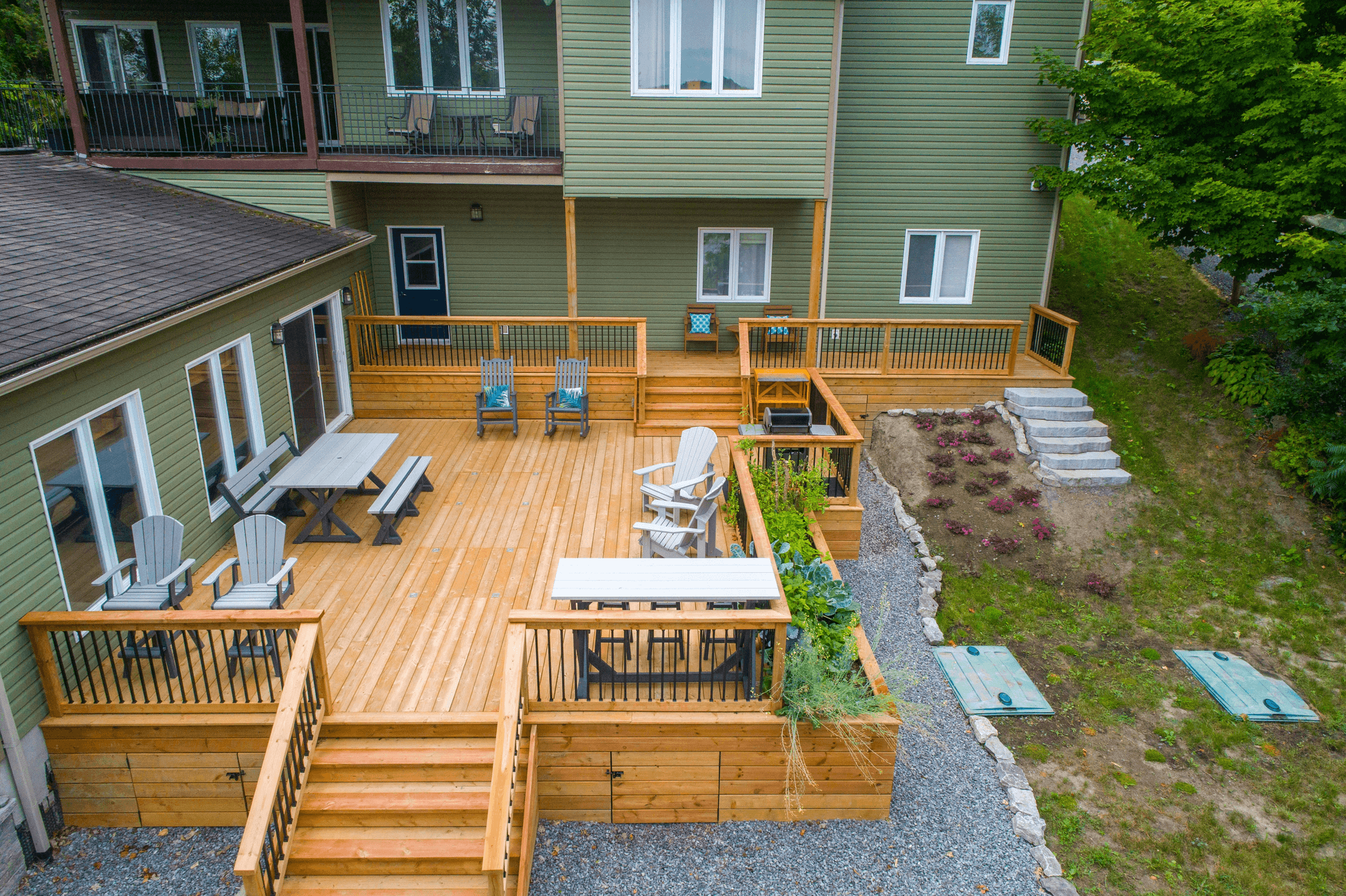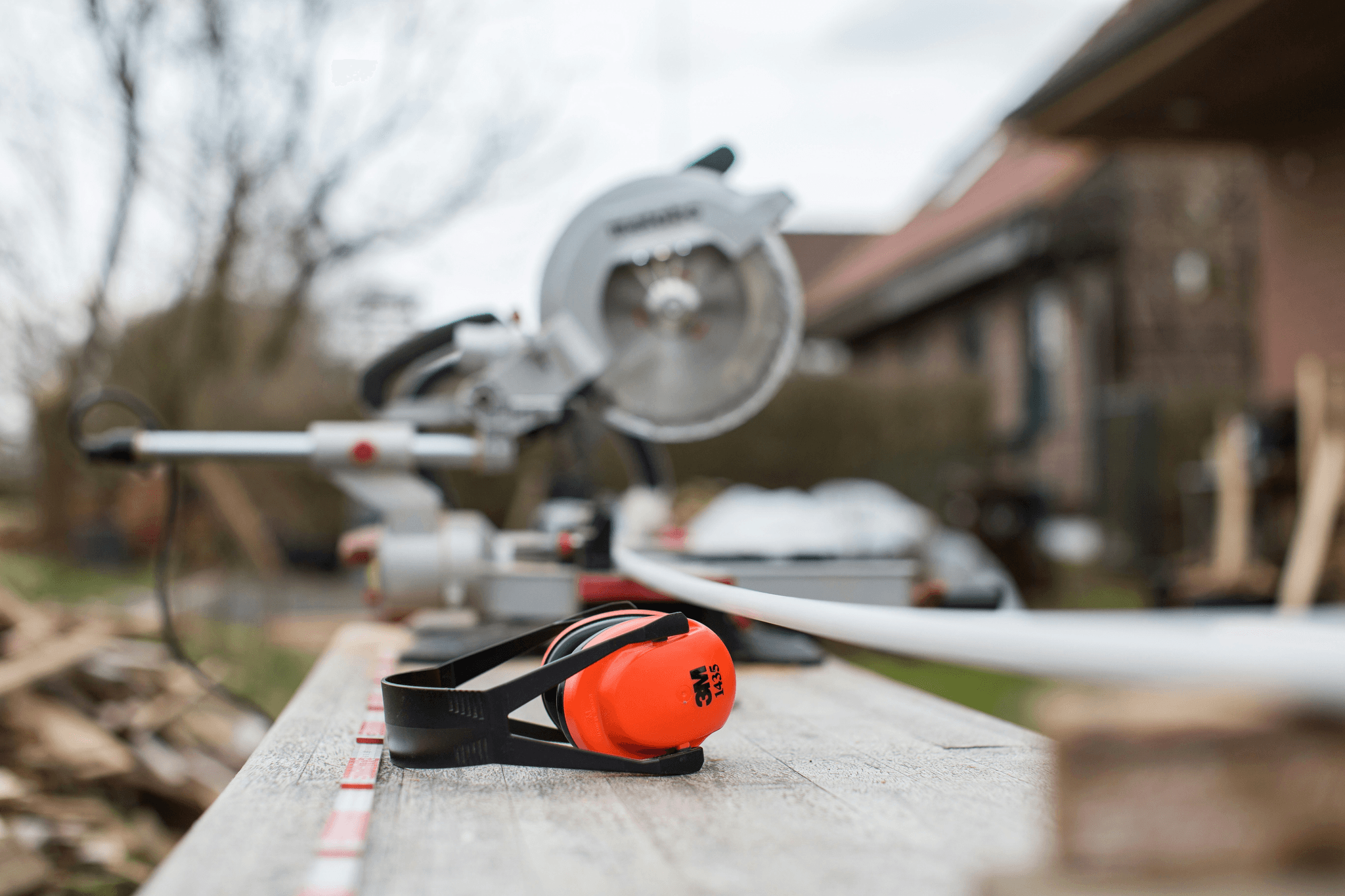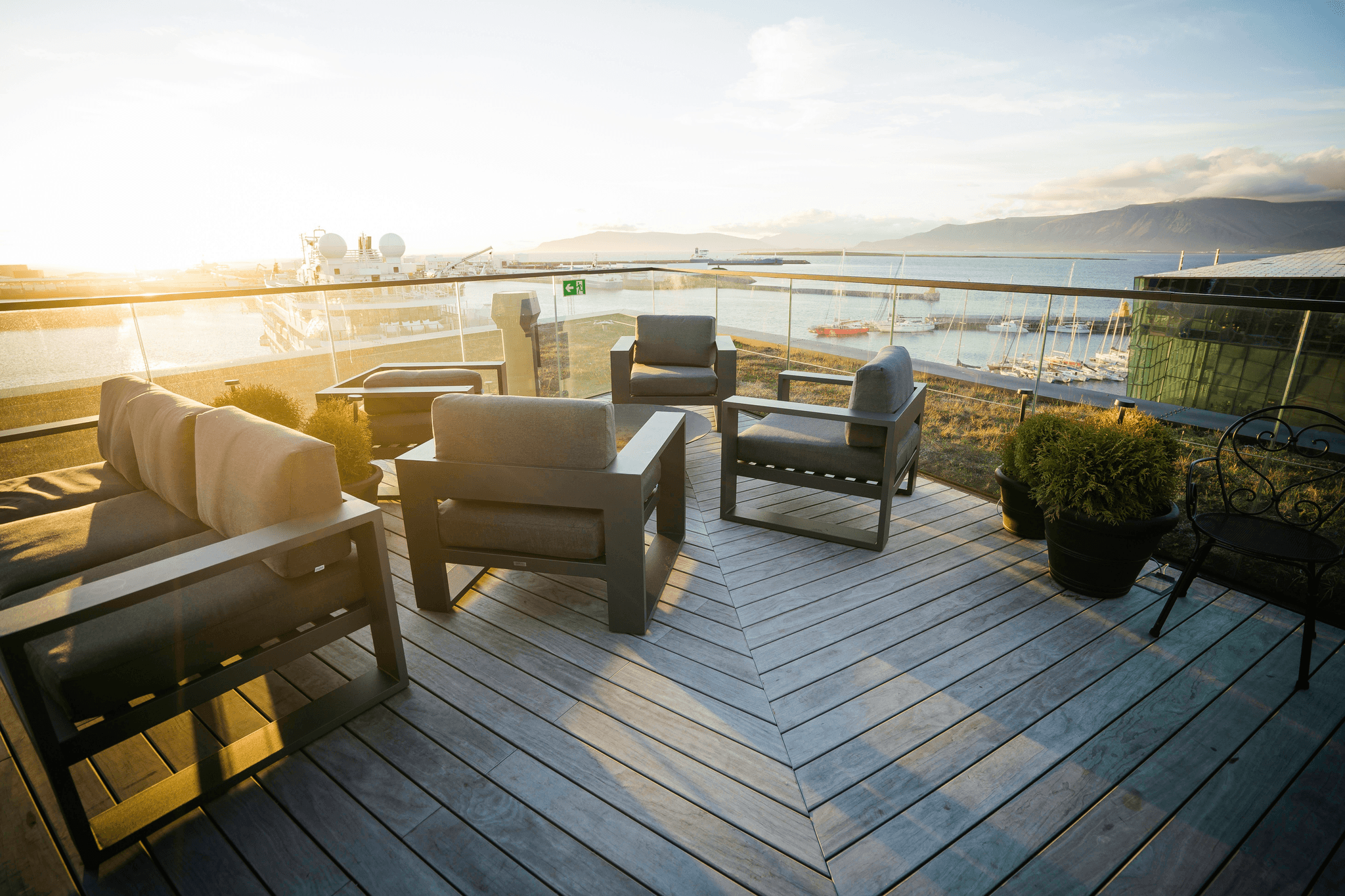Introduction

Why Choose Composite Deck Posts
Composite deck posts are not just about aesthetics; they also bring superior strength and longevity to your decking project. These posts are designed to withstand harsh weather conditions without warping or splintering, which is often the Achilles' heel of wood alternatives. By opting for composite materials, you’re investing in a structure that requires less maintenance while still delivering a stunning look that complements your outdoor space.
Understanding Composite Decking Materials
Understanding the different types of composite decking materials available can help you make informed decisions about your project. Composite lumber decking typically consists of a mixture of recycled wood fibers and plastic, resulting in a product that mimics the appearance of natural wood but with added benefits like fade resistance and ease of cleaning. Familiarizing yourself with options like Trex decking will ensure you choose products that fit your budget and aesthetic preferences while keeping an eye on Trex decking prices.
Benefits of Proper Installation
Proper installation is crucial when working with composite deck boards; it can significantly affect both performance and longevity. A well-installed deck not only looks great but also minimizes potential issues like sagging or misalignment over time. By following best practices during installation, including using appropriate tools and techniques for securing composite deck railing, you ensure that your investment remains beautiful and functional for years ahead.
Selecting Quality Composite Deck Posts

Choosing the right composite deck posts is crucial for the overall stability and aesthetics of your deck. With a variety of options available, it’s essential to do your homework and find quality materials that suit your needs. This section will guide you through researching material options, comparing Trex decking prices, and considering the durability of composite lumber decking.
Researching Material Options
Start by exploring various brands and their offerings; some may use recycled materials while others focus on enhanced durability features. It’s also wise to check customer reviews and ratings to ensure you’re selecting composite deck boards that have proven performance in real-world applications.
Additionally, consider the color and texture of the composite lumber decking you want to use; these factors can significantly impact your deck's overall look. Many manufacturers offer a range of finishes that mimic natural wood, giving you versatility in design without sacrificing durability. Remember, investing time in researching material options will pay off in the long run as it contributes to the longevity and appeal of your composite deck.
Comparing Trex Decking Prices
Trex is one of the most recognized names in the world of composite decking, but how do their prices stack up? When comparing Trex decking prices with other brands, look beyond just the upfront cost; consider factors such as warranty length and maintenance requirements as well. Sometimes paying a bit more for quality can save you money down the road through reduced upkeep or longer-lasting materials.
Don’t forget to check for seasonal sales or promotions that might make those decking Trex prices more palatable! Many suppliers offer discounts during off-peak seasons or when purchasing larger quantities—so keep an eye out for those deals! By being savvy about pricing comparisons among various brands, including Trex, you'll be better equipped to make an informed decision on which composite deck posts fit your budget without compromising quality.
Considering Composite Lumber Decking Durability
Durability is key when selecting composite lumber decking; after all, no one wants a sagging or rotting deck after just a few years! Look for products that boast high resistance against weather elements like moisture and UV rays—these features are essential for maintaining both safety and aesthetics over time. A durable composite deck post will not only support your structure but also resist fading or warping compared to traditional wood alternatives.
Moreover, some manufacturers provide specific testing results regarding their product's longevity under various conditions—this information can be invaluable when making comparisons between different types of composite lumber decking. By prioritizing durability during your selection process, you're ensuring that your investment stands strong against nature’s challenges while providing lasting enjoyment for years to come.
Planning Your Deck Layout

Designing for Functionality
Functionality is key when designing your composite deck layout. Think about how you intend to use the space—whether for entertaining guests, relaxing with family, or hosting summer barbecues. Incorporating features like built-in benches or planters can elevate both the utility and aesthetics of your deck while seamlessly integrating with composite lumber decking.
Consider traffic flow as well; ensure there’s enough room for movement between different areas on the deck without feeling cramped. You’ll want to position furniture thoughtfully so that it doesn’t obstruct pathways or views. Remember that functionality goes hand-in-hand with style; a well-planned layout will showcase your choice in materials like Trex decking while providing comfort and ease of use.
Using Composite Deck Boards Efficiently
Maximizing the use of composite deck boards is essential for both cost-effectiveness and environmental sustainability. Start by measuring your space carefully to determine how many boards you'll need; this will help you understand Trex decking prices and avoid over-purchasing or underestimating material requirements. Consider using shorter pieces in less visible areas to minimize waste—after all, every inch counts!
When laying out your boards, think about orientation as well; running them parallel or perpendicular to existing structures can create visual interest and impact how light interacts with the surface of your new deck. Additionally, using different widths or colors can add depth without requiring excessive additional materials—just another way to keep those decking Trex prices in check!
Mapping Out Structural Support
A solid foundation is paramount when installing composite deck posts and ensuring long-lasting durability for your structure. Begin by mapping out where the structural supports will go based on local building codes and load requirements; this step cannot be overlooked if you want a safe and stable installation! Proper placement will not only support weight but also enhance overall aesthetics by creating clean lines throughout.
Tools You’ll Need for Installation

When it comes to installing composite deck posts and creating your dream outdoor space, having the right tools is essential. Quality tools not only make the job easier but also ensure a professional finish that enhances the beauty of your composite deck. From cutting to fastening, each step requires specific equipment tailored for working with composite lumber decking.
Essential Equipment for Decking Projects
To start off, you'll need a good set of basic tools that are indispensable for any decking project. A circular saw or miter saw will be crucial for cutting your composite deck boards to size accurately. Additionally, a power drill will help you fasten the posts securely and make installing composite deck railing a breeze.
Don’t forget about measuring tools! A tape measure and level are vital to ensure everything is aligned correctly and that your layout looks fantastic. These essential pieces of equipment will not only save you time but also prevent costly mistakes when working with materials like Trex decking.
Recommended Brands for Deck Tools
Choosing quality brands can make all the difference in your decking experience. For power tools, brands like DeWalt and Makita offer reliable options that stand up well against wear and tear while handling composite materials. When it comes to hand tools, Stanley and Klein have excellent reputations for durability and performance.
For those looking at specific brands known for their compatibility with composite materials, look no further than Trex itself; they often provide specialized accessories designed to work seamlessly with their products. Investing in reputable brands may seem pricier upfront but can lead to significant savings down the line by reducing replacements or repairs due to tool failure.
Safety Gear to Consider
Safety should always be a top priority when embarking on any home improvement project, especially one involving heavy materials like composite lumber decking. Start by investing in high-quality safety goggles to protect your eyes from debris while cutting or drilling into your deck posts or boards. Ear protection is also advisable as power tools can get quite loud during installation.
Don’t overlook gloves! Wearing sturdy work gloves will protect your hands from sharp edges on composite deck boards as well as provide grip while handling slippery materials during installation of both posts and railings. Lastly, consider wearing a dust mask if you're working in an enclosed area; this helps keep harmful particles out of your lungs while you create a beautiful outdoor oasis.
Preparing the Ground for Installation

Before diving into the installation of your composite deck posts, it's crucial to prepare the ground properly. A solid foundation sets the stage for a sturdy and long-lasting deck, ensuring that your investment in composite lumber decking pays off in durability and aesthetics. Neglecting this step can lead to uneven surfaces and structural issues down the line.
Importance of a Solid Foundation
A solid foundation is essential when installing composite deck posts because it directly affects the stability of your entire deck structure. If the ground beneath is unstable or uneven, even the best composite deck boards won't perform as expected, leading to potential sagging or shifting over time. Investing time in preparing a strong base means you can enjoy your beautiful new deck without worrying about future repairs or safety hazards.
How to Level the Ground
Leveling the ground may sound like an arduous task, but it's easier than you think! Start by clearing away any debris, grass, or plants from your chosen area—this gives you a clean slate to work with. Next, use a shovel and rake to adjust any high spots while filling in low areas with soil until everything is nice and flat; consider using a level tool to ensure accuracy throughout this process.
Choosing the Right Base Materials
Choosing appropriate base materials is just as important as leveling; they provide essential support for your composite deck posts and overall structure. Gravel is often recommended due to its excellent drainage properties, which help prevent moisture buildup that could compromise your composite lumber decking's integrity over time. Additionally, using crushed stone can create a stable layer that supports weight while allowing air circulation beneath your decking trex price investment.
Installing Composite Deck Posts
Installing composite deck posts is a crucial step in creating a sturdy and visually appealing structure for your outdoor space. These posts serve as the backbone of your deck, supporting the weight of composite deck boards and providing essential stability. With proper installation, you can ensure that your composite lumber decking will last for years to come.
Step-by-Step Installation Guide
To kick things off, start by marking the locations where your composite deck posts will go. Use stakes and string to outline the perimeter of your deck, ensuring that everything is square and aligned properly. Next, dig holes for each post according to the manufacturer’s guidelines—typically, they should be at least 2 feet deep to provide adequate support.
Once you have your holes ready, it's time to set the posts in place. Pour gravel into each hole for drainage before placing the post and then fill around it with concrete mix for stability. Make sure to check that each post is level before allowing it to cure fully; this will save you headaches down the line when installing your composite deck railing.
After curing, attach beams or joists to your installed posts according to your layout plan. This framework will support the composite deck boards you’ll lay on top later. Keep an eye on spacing between posts; typically, they should be no more than 6-8 feet apart depending on local building codes and load requirements.
Common Mistakes to Avoid
One of the most common mistakes people make when installing composite deck posts is not checking their measurements carefully before digging holes. Double-checking distances can save time and prevent costly adjustments later on! Another pitfall is neglecting local building codes; always ensure that you're compliant with regulations regarding post depth and spacing.
Another mistake involves not allowing enough time for concrete or other adhesives used during installation to cure properly before adding weight onto them. Rushing this process can lead to instability in your structure over time! Lastly, failing to use a level during installation can result in uneven surfaces that may affect both aesthetics and safety—so don’t skip this crucial step!
Tips for Aligning Posts Perfectly
To align those composite deck posts like a pro, consider using a chalk line after marking out locations with stakes; this helps visualize straight lines across all posts! Additionally, utilizing a laser level can offer precision beyond what a standard bubble level might provide—especially helpful if you're working alone!
When inserting multiple posts at once, use temporary bracing between them until they’re secured; this keeps everything aligned while you're working on securing them into place with concrete or fasteners. Finally, take breaks often during installation—it’s easy to overlook details when fatigued!
Adding Composite Deck Railing
Enhancing Safety and Aesthetics
Composite deck railing serves dual purposes: ensuring safety while amplifying the visual appeal of your space. By choosing sturdy railings that align with your design vision, you can create a welcoming atmosphere for family and friends. The right railing not only enhances the beauty of your composite lumber decking but also adds an extra layer of security that every homeowner desires.
Choosing Railing Styles and Materials
When selecting railings for your composite deck, consider both style and material compatibility with your existing structure. From sleek modern designs to traditional balusters, there’s a wide array of options to fit any aesthetic preference. Additionally, pairing railings made from similar materials as your composite deck boards ensures durability and longevity—perfectly complementing the investment you've made in quality composite deck posts.
Installation Tips for Composite Railing
Installing composite deck railing may seem daunting at first, but with proper preparation, it can be straightforward and rewarding. Start by ensuring that all components are aligned correctly with the structural support mapped out during planning; this will guarantee stability in the long run. Remember to double-check measurements before cutting any pieces—this is where many DIYers stumble—and enjoy the satisfaction of seeing your beautiful new railing enhance both safety and style on your composite decking.
Maintaining Your Composite Deck

Maintaining your composite deck is essential for ensuring its longevity and aesthetic appeal. With the right care, your composite deck posts and boards can withstand the elements while retaining their beauty. Let's dive into some practical tips to keep your deck in top shape!
Routine Care and Cleaning Tips
Regular cleaning is key to preserving the look of your composite lumber decking. Start by sweeping away debris like leaves and dirt that can trap moisture and lead to mold growth. For a deeper clean, use a mild soap solution with water, scrubbing with a soft-bristle brush—this will help maintain the vibrant colors of your deck composite decking without causing any damage.
It's also wise to rinse off any spills promptly, especially those from food or drinks that could stain your composite deck boards over time. Avoid using harsh chemicals or pressure washers, as they may harm the surface finish of your composite deck posts. Instead, stick with gentle solutions designed specifically for composite materials to ensure you’re treating your investment right.
Dealing with Common Issues
Even with regular maintenance, you may encounter some common issues with your composite deck railing or boards along the way. One prevalent problem is fading due to sun exposure; however, many modern composites are designed to resist UV damage better than older versions. If you notice fading or discoloration, consider applying a specialized UV protectant designed for composite materials.
Another issue might be mildew growth in damp areas; if this happens, use a mixture of vinegar and water for effective treatment without damaging your decking material. Additionally, be on the lookout for loose screws or hardware in your installation—you want those composite deck posts snugly secured! Addressing these problems quickly will keep your deck looking pristine.
Long-term Maintenance for Longevity
To ensure long-term durability of your composite lumber decking, consider scheduling an annual inspection of all components including railings and posts. This proactive approach allows you to catch potential issues early before they escalate into costly repairs—think of it as giving your deck its yearly check-up! Also, make sure that drainage systems are functioning properly so water doesn’t pool around those critical areas.
Conclusion

In wrapping up, creating a stunning outdoor space with composite materials is not only achievable but also incredibly rewarding. Composite deck posts and boards provide the perfect blend of aesthetics and functionality, ensuring your deck stands out while remaining durable. With the right planning and installation techniques, you can enjoy a beautiful composite deck for years to come.
Achieving a Beautiful Deck with Composite Materials
A well-designed composite deck can transform your backyard into an inviting oasis. By selecting high-quality composite lumber decking, you ensure that your investment not only looks great but also withstands the test of time. With various styles available in composite deck boards and railings, achieving that dream deck aesthetic is easier than ever.
Investing in Quality for Lasting Appeal
When it comes to decking materials, cutting corners can lead to costly repairs down the line. Investing in quality products like Trex decking ensures that you're getting durability alongside style; after all, who wants to deal with warped or faded boards? While initial costs may seem higher—especially when comparing Trex decking prices—considering the long-term benefits makes it a wise choice for any homeowner.
Final Thoughts on Composite Decking Success
Success in building your composite deck lies in careful planning, quality materials, and proper installation techniques. From selecting the best composite deck posts to ensuring structural integrity with appropriate support, every detail counts toward achieving that perfect outdoor space. Embrace this journey and look forward to enjoying countless moments on your new composite deck!
